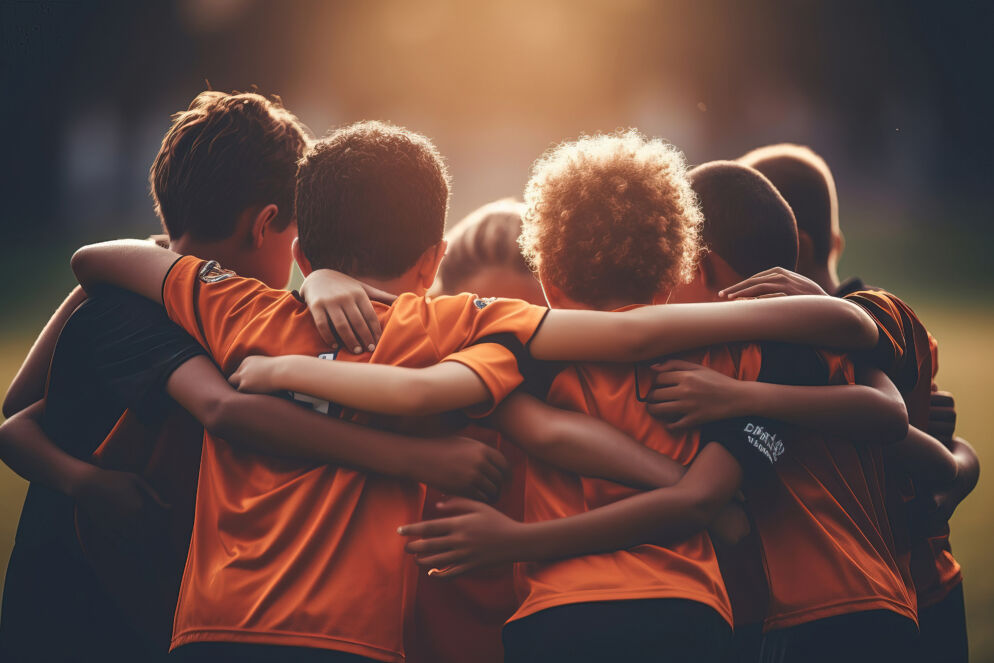
Kindness and respect. Support and understanding.
When we think of an inclusive sport environment, words like these come to mind. But how do we turn these words into actions we can implement as parents or guardians out on the field or court?
At the U.S. Center for SafeSport, athlete safety and well-being are our priority. By educating communities on how they can help prevent abuse and misconduct in sports, we help every participant feel safe, supported and strengthened. And more than that, we seek to help parents and coaches foster settings that are more inclusive and accessible for all athletes.
But first, what do inclusive environments look like in practice? And how do we create them?
Inclusive sport environments value all athletes
From respecting physical and emotional boundaries to giving athletes with disabilities the help they request, inclusive sport settings treat each athlete with respect and care and make sure every athlete’s needs are met.
Maybe you’ve seen an athlete with a disability left out of an activity because the coach failed to offer a drill that’s accessible to all teammates. Or maybe you’ve witnessed a participant’s confused look as they try to understand a set of complicated warm-up instructions.
When we prioritize inclusivity, we prioritize principles that make sports accessible for everyone. Examples of this are communicating openly and clearly in ways that each child can understand and adapting activities so athletes of all abilities can play and thrive.
Inclusive sport environments are places where no one is excluded based on something that makes them different, where all athletes can participate at the level they want and where kindness and respect outweigh competition and fitting in.
What parents can do
When a child steps onto the field or court, they may bring stress, trauma and individual challenges from their day-to-day lives with them. As a parent, guardian or coach, you play a key role in creating a setting that is sensitive to that stress or trauma—and is built on support.
By reinforcing that no one has to change to fit in, you can help create an atmosphere that values and appreciates all athletes.
Here are 5 actions you can take:
1. Model respectful, kind behavior.
Demonstrate care and compassion when engaging with athletes.
2. Value each athlete.
Value the unique contributions each child brings to the team or organization and find ways to support and encourage everyone’s individual contribution.
3. Communicate openly and clearly.
Communicate in ways that each participant can understand, including using simplified language when possible and creating alternate formats of policies, rules or schedules.
4. Promote athletes’ agency and autonomy.
Encourage athletes to set physical and emotional boundaries and respect the boundaries they set.
5. Address harmful behaviors.
When inappropriate or harmful behavior occurs, address it immediately. This way, you can help maintain safe, supportive spaces for all.
Sports allow kids to learn and grow, but only when everyone is supported and included. How we treat each other matters. By building inclusive sport settings that are welcoming and encouraging, we can lift athletes up, making them stronger and happier.
The U.S. Center for SafeSport produces tools and resources for parents, guardians and coaches to help young athletes feel empowered and supported. Our Creating Inclusive Sport Environments (eptoolkit.uscenterforsafesport.org) handout provides key information and actions you can take to safeguard sports for all. For additional resources to help you recognize, prevent and respond to abuse in sports, visit uscenterforsafesport.org/abuse-prevention-resources.
If you or someone you know has experienced abuse or misconduct involving a participant of the U.S. Olympic and Paralympic Movement, you can make a report to the U.S. Center for SafeSport at uscenterforsafesport.org/report-a-concern.




